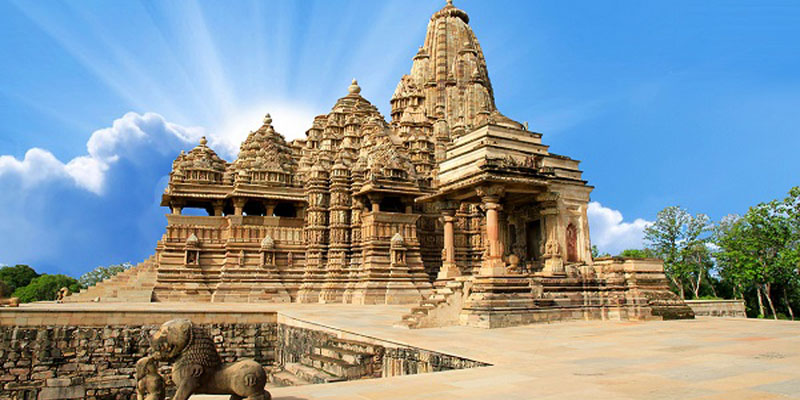The magnificent historical monuments that dot the Indian landscape are a reminder of the architectural brilliance of the mighty kings and emperors who ruled parts of India at some point in time. But, perhaps, none of these have evoked so much wonder and curiosity as the Khajuraho Group of Monuments, built by the Chandelas more than a 1,000 years ago. Located in the small and sleepy town of Khajuraho in Madhya Pradesh, the temples are famous for their erotic architecture which stands in stark contrast to a country noted for its conservative values. Many are left wondering as to why were these erotic figurines made and what are they trying to depict. Let us try to unravel some of the secrets behind these erotic carvings. If you are planning to visit the city and catch a glimpse of the monuments, but are confused about where to stay in the city, check out the Khajuraho hotels list.
Only 10 percent figurines are erotic in nature
Most of us think that the Khajuraho carvings are only about eroticism. But that is a misconception. In reality, erotic figurines make up about 10 percent of the entire sculptures found in the temples. The remaining 90 percent are of the various gods and goddesses, professionals such as artisans, musicians, dancers and warriors or depict the everyday life.
The legend of Hemvati
There are a number of stories behind the erotic carvings but the most interesting among these is of Hemvati. It is said that a beautiful woman lived near Benaras. One day, while taking a bath in a pond, she caught the eye of the Moon God and the two conceived a child out of wedlock. The moon God prophesied that in the future the child would grow up to become a mighty king. But, Hemavati fled to the jungles fearing ostracism and there raised the child. She named him Chandravarman. True to the prophecy, the child grew up to become a great king and founded the Chandela dynasty. It is believed that inspired from his mother’s story, Chandravarman built the Khajuraho temples with the erotic sculptures. In all these were 85 temples, but today just 22 of these have survived.
Other legends and beliefs
There are also other legends and beliefs such as the one that associates the carvings depicting mithunas with good luck, or that the figures were a part of the sex eduction during the days of the Chandelas.
Though whatever the interpretations, a visit to the temple is a must if you want to experience the rich architecture of the Chandelas. The best part is that the temples are close to many hotels in Khajuraho. Some of these also provide guides who would make your visit all the more memorable.

